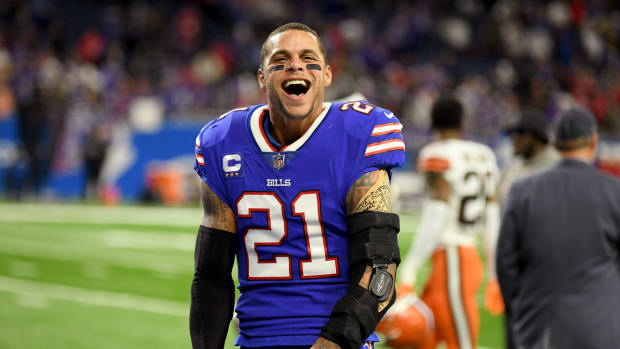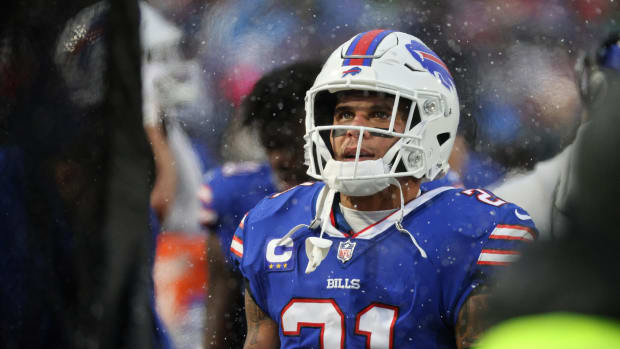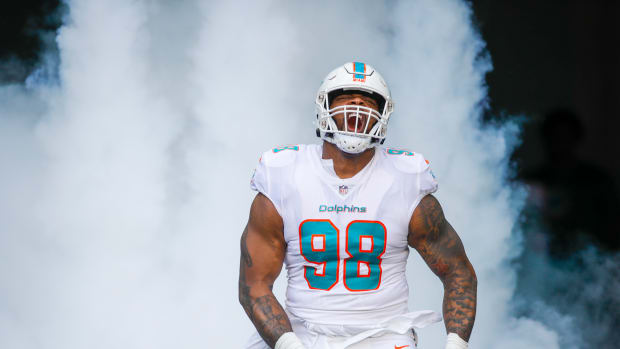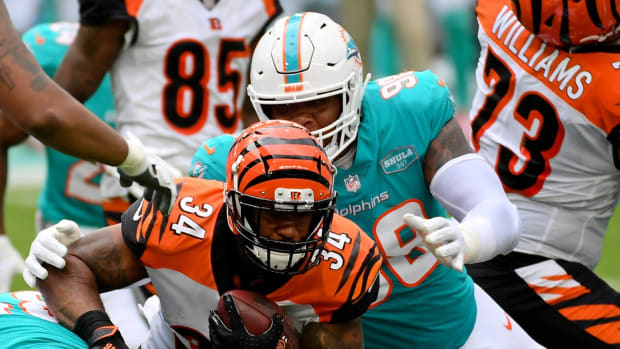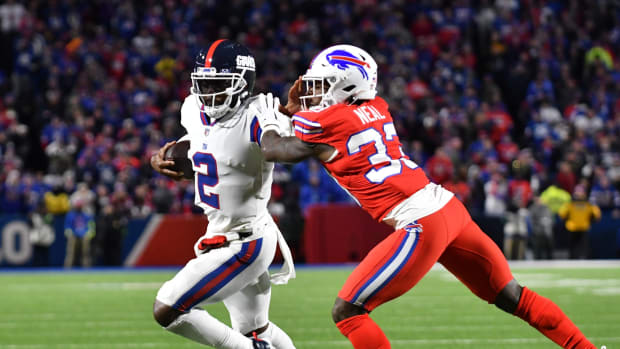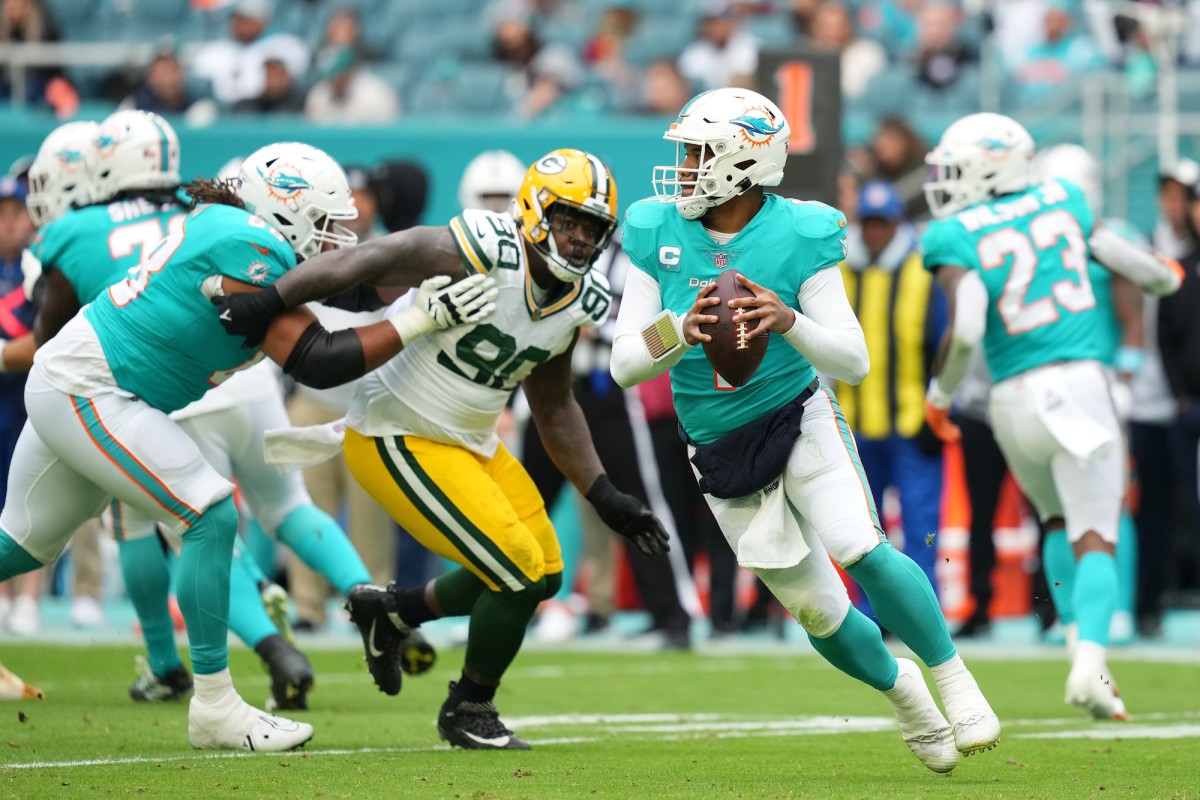
NFL Doctor Discusses Tua Situation
Miami Dolphins quarterback Tua Tagovailoa finds himself in the concussion protocol for a second time this season, but NFL Chief Medical Officer Dr. Allen Sills says nothing that happened during the game against the Green Bay Packers should have him removed from the game or at least checked out.
Tagovailoa's head hit the surface at Hard Rock Stadium late in the second quarter after he was brought to the ground after completing a pass to tight end Durham Smythe, but he got up normally and quickly returned to the huddle.
"The way that we identify someone who might be concussed during the game is either the player, the patient reports, symptoms, or someone notices a visible sign and that visible sign is recognized from a list that we circulate and train everyone to recognize and that's things like clutching the head, slow to get up, obviously ataxia, impact seizure, those things," Sills said during an interview with NFL Network on Tuesday. "So what our spotters and our unaffiliated neuro doctors are looking for is any blow that transmits force to the head or neck area, followed by that injury behavior.
"There are many blows to the head that occur during a game; we're always looking for the blow plus the injury behavior and obviously if we see any injury behavior, then there's a call down made to evaluate that player. Also, if a player identifies any symptoms or a teammate, coach, official, anyone else identify symptoms, that also initiates a protocol. So many people can initiate the protocol. And in this game on Sunday, none of those factors were present.
"There were no visible signs present even though there was a blow to the head and the player did not report any symptoms despite being in contact with the medical staff throughout the game. So there was nothing that would have triggered the protocol in the moment."
The Dolphins placed Tagovailoa in the concussion protocol Monday after he reported concussion symptoms.
Sills indicated that there are athletes who exhibit concussion symptoms on a delayed basis, sometimes hours after the triggering incident, sometimes days.
"I think the sole focus here should be on kudos to the athlete for speaking up, for endorsing those symptoms and recognizing that there there was a potential problem and then kudos to the team for immediately acting on that, putting the player in the concussion protocol and again behaving in what we would say is a very conservative manner," Sills said. "We do review every single one of those cases that happens during the year. And as I said, it's a handful of cases that we've seen each year over the past few seasons."
---------------------------------------------------------------------------
FOR EVEN MORE COVERAGE ON THE MIAMI DOLPHINS, CHECK OUT SPORTS ILLUSTRATED'S MIAMI DOLPHINS PAGE ON SI.COM
--------------------------------------------------------------------------------
THE QUESTION OF TUA BEING CLEARED TO PLAY
The big question surrounding Tagovailoa is whether it would be advisable for him to return to action given the earlier concussion he sustained against the Cincinnati Bengals, but Sills said the return to play protocol will be the same as if this were his first concussion.
"Anyone that's diagnosed with a concussion, whether it's their first or second concussion during the season goes through the same exact return to play protocol," Sills said. "Many steps involved in that. They have to return to their asymptomatic baseline with no symptoms. They have to go through a graded exertion protocol, again with no symptoms. They have to be evaluated by the team neuropsychologist and undergo neuropsychological testing and that's compared back to their baseline from an uninjured state. They have to be seen by an independent neurologic consultant who evaluates them and make sure that they agree that they're no longer concussed and then the team medical staff also has to clear the athlete. That's a multi-step process that is meant to be deliberate and is followed in every one of these cases.
"And what I would say is that in any case of this nature, the team is going to behave in a very conservative manner. They're going to gather all the data, they're going to make sure the athlete goes through all of those steps. Sometimes they'll even seek outside opinions about that. And then they'll do what we do every day in medicine, which is they'll sit down with the athlete, and they'll explain to him the situation and allow that athlete to have a voice in that decision making because at the end of the day, our protocol is to make sure that the athlete appears to be recovered. But we still with today's technology can't really estimate that risk of a future injury. And so what we have to do is make sure the athlete is fully recovered and then make sure that their voice and their autonomy is respected in this decision-making process."
---------------------------------------------------------------------------
Thanks for reading. Make sure to bookmark this site and check back daily for the latest Dolphins news and analysis year-round. Also, you can follow me on Twitter at @PoupartNFL, and that's where you can ask questions for the regular All Dolphins mailbags. You also can ask questions via email at fnalldolphins@yahoo.com.

